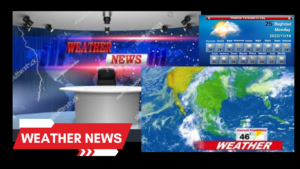Weather Monitoring
Weather Monitoring: Your Window to the Sky
Have you ever wondered how meteorologists know if it’s going to rain tomorrow, or how they predict a big snowstorm? It’s all thanks to weather monitoring!
Weather monitoring is like having a giant, invisible eye in the sky that watches over us and tells us what’s happening with the weather. But how does this “eye” work? Let’s explore!
The Tools of the Trade: How We Monitor Weather
Weather monitoring uses a variety of tools and techniques to collect information about the atmosphere. Here are some of the most important ones:
- Weather Satellites: These are like giant cameras in space that take pictures of the Earth’s atmosphere. They can see clouds, storms, and even the temperature of the air.
- Weather Balloons: Every day, weather balloons are launched all over the world. These balloons carry instruments that measure things like temperature, humidity, and wind speed as they float up into the atmosphere.
- Weather Stations: You might have seen a weather station in your town or city. These stations use instruments to measure the weather right on the ground. They measure things like temperature, humidity, wind speed, and rainfall.
- Radar: Radar is like a giant sound wave that bounces off things in the atmosphere. It can detect rain, snow, and even hail, giving meteorologists a picture of what’s happening in the sky.
- Lightning Detectors: These special devices can detect lightning strikes all over the world. They help meteorologists track storms and understand how they develop.
Why is Weather Monitoring Important?
You might be thinking, “Why do we need to monitor the weather?” The answer is simple: weather impacts our lives in so many ways!
- Safety: Weather monitoring helps us stay safe during storms. We can be warned about floods, tornadoes, hurricanes, and other dangerous weather events.
- Agriculture: Farmers rely on weather monitoring to know when to plant crops, when to water, and when to harvest. Good weather forecasts can help them make important decisions about their farms.
- Transportation: Weather monitoring helps keep planes, ships, and cars safe. It allows pilots, captains, and drivers to make informed decisions about travel.
- Energy: Weather forecasting can help power companies predict energy demand. They can adjust their power generation to meet the needs of homes and businesses.
Weather Monitoring and You: How to Stay Informed
There are many ways you can stay informed about the weather. Here are a few tips:
- Check the News: Your local news channel or website is a great source for weather information.
- Use a Weather App: There are many free weather apps for your phone or computer that can provide you with accurate forecasts.
- Listen to the Radio: Radio stations often have weather reports during their broadcasts.
- Look for Warnings: Pay attention to weather warnings and advisories issued by the National Weather Service.
- Be Prepared: Knowing what to do during different types of weather events can save lives.
Understanding Weather Monitoring: It’s Not Just About Rain
Weather monitoring is a vital tool for keeping us safe, informed, and prepared. It involves a complex network of tools, data, and expertise, all working together to understand the ever-changing weather. So the next time you see a weather report, remember the amazing technology and science behind it!
secondary keywords: weather forecasting, weather radar, weather satellite, weather app, weather report


